|
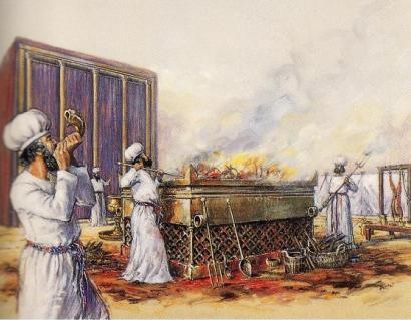
The Altar stood in the midst of the eastern half of the oblong Court
enclosure, the sacrificial tables and utensils being upon the left of the
main entrance within the Court. The Altar of Burnt-offering was the
instrument used for the purpose of reconciling man with his Maker. The Altar was
5 cubits long, 5 cubits broad and 3 cubits high (7 1/2 feet by 7 1/2 by 4 1/2). It was a
large hollow case, made of shittim wood, overlaid with brass, and ornamented
with huge wooden horns overlaid with brass, one for each of the four corners.
A grating or network of brass,
having a ring at each of its four corners,
was hung in the middle of the top of the Altar, and on it was laid the wood for
the fire which consumed the sacrifice. On two sides of the Altar were rings of
brass, through which were laid staves of shittim wood overlaid with brass, to
carry it from place to place. The pots, shovels, basins, flesh-hooks and fire
pans, as well as all other vessels or utensils necessary to the service of the
Altar, were made of brass.
Exodus
27: 1-8; 38: 1-7.
Other Vessels Used in the Service of the Tabernacle
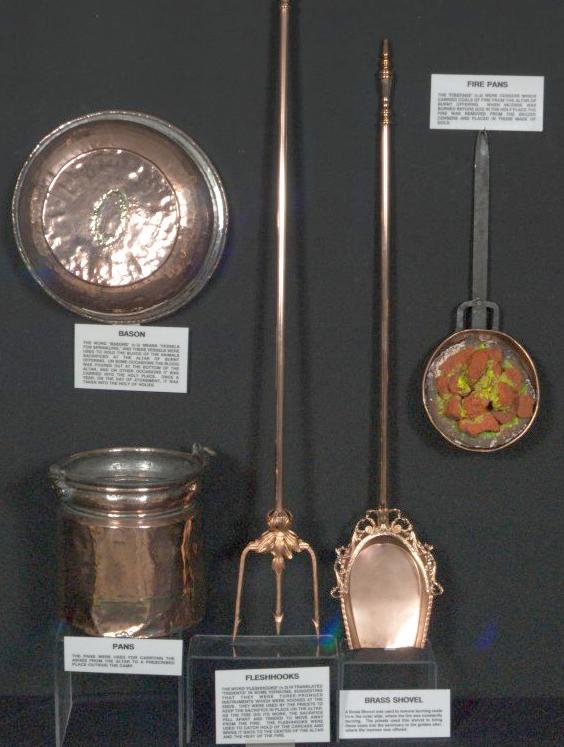
Bason, Fire
Pans, Pans, Fleshhooks & Brass Shovel
Bason - Exodus
38 The word "basons"
(v.3) means "vessels for sprinkling," and these vessels were used to
hold the blood of the animals sacrificed at the altar of burnt-offerings.
On some occasions the blood was poured out at the bottom of the altar, and on
other occasions it was carried into the Holy Place. Once a year, on the
Day of Atonement, it was taken into the Holy of Holies.
Fire Pans
The fire pans or
censers which carries coals of fire from the altar of burnt-offerings.
When incense was burned before God in the Holy Place the fire was removed from
the Brazen Censer and placed in those made of gold.
Pans
The pans were used
for carrying the ashes from the altar to a prescribed place outside the camp.
Fleshhooks
The word "fleshhooks"
is translated "tridents" in some versions suggesting that they
were three-pronged instruments which were hooked at the ends. They were
used by the priests to keep the sacrifice in place on the altar. As the
fire did its work, the sacrifice fell apart and tended to move away from the
fire. The fleshhooks were used to catch hold of the carcass and bring it
back to the center of the altar and the heat of the fire.
Brass Shovel
A brass shovel was
used to remove burning coals from the outer altar, where the fire was constantly
burning. The priest used the shovel to bring these coals into the
sanctuary to the Golden Altar, where the incense was offered.
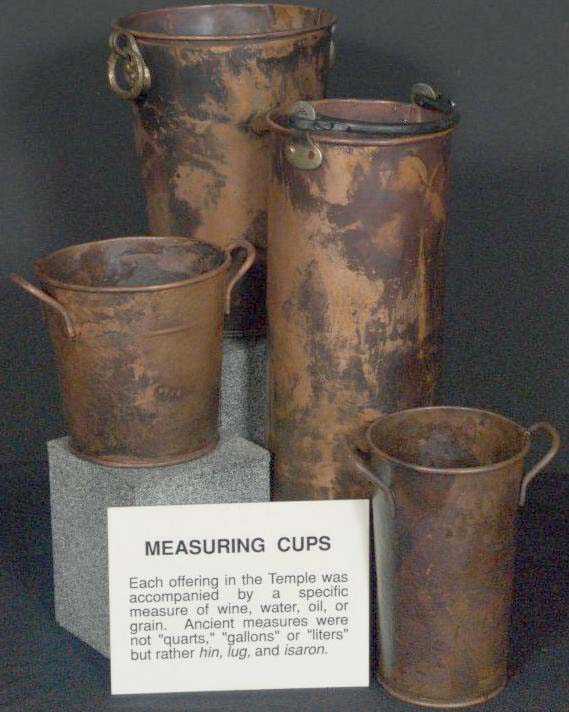
Measuring
Cups
Each offering in
the Temple was accompanied by a specific measure of wine, water, oil, or
grain. Ancient measures were not "quarts," "gallons"
or "liters" but rather hin, lug, and isaron.
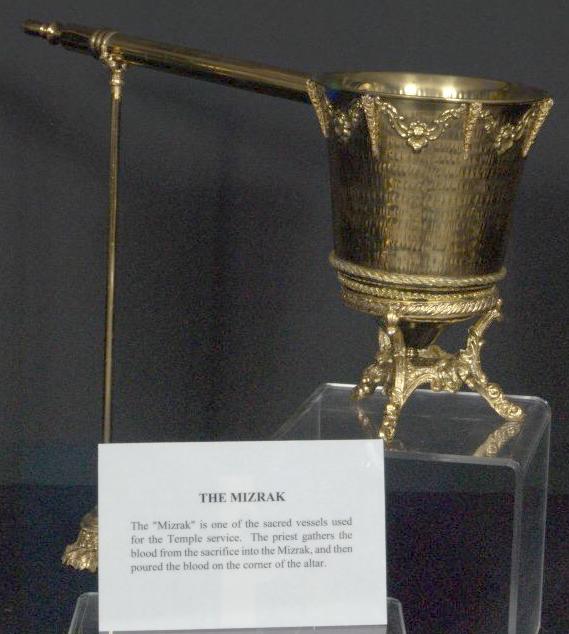
The
Mizrak
The "Mizrak"
is one of the sacred vessels used for the Temple service. The priest
gathers the blood from the sacrifice into the Mizrak, and then poured the blood
on the corner of the altar.
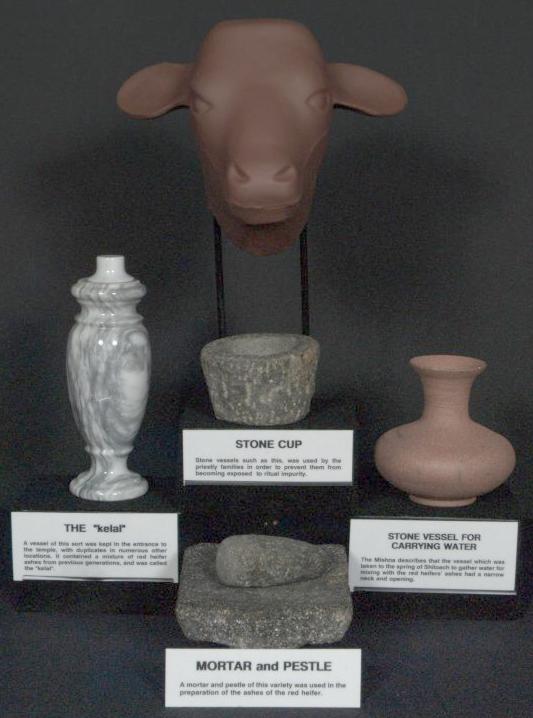
Stone
Vessels

|
